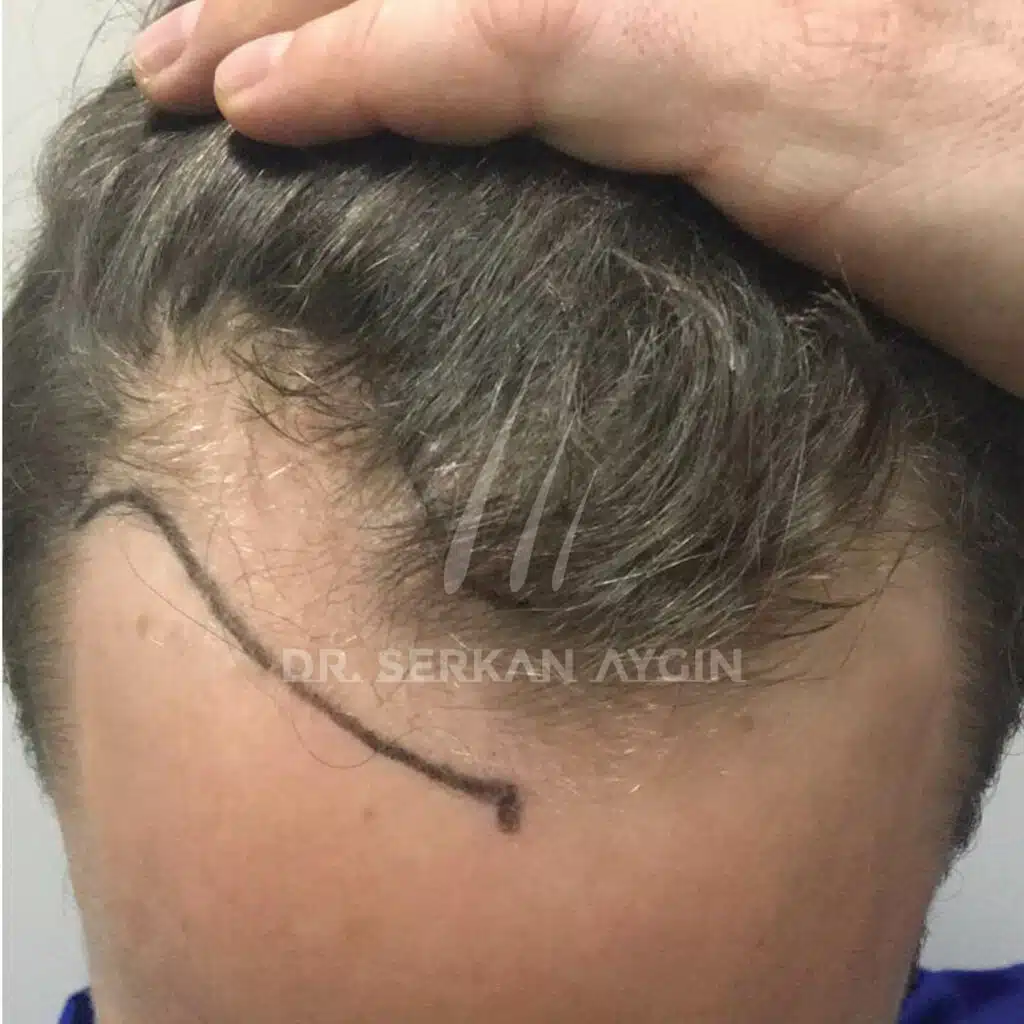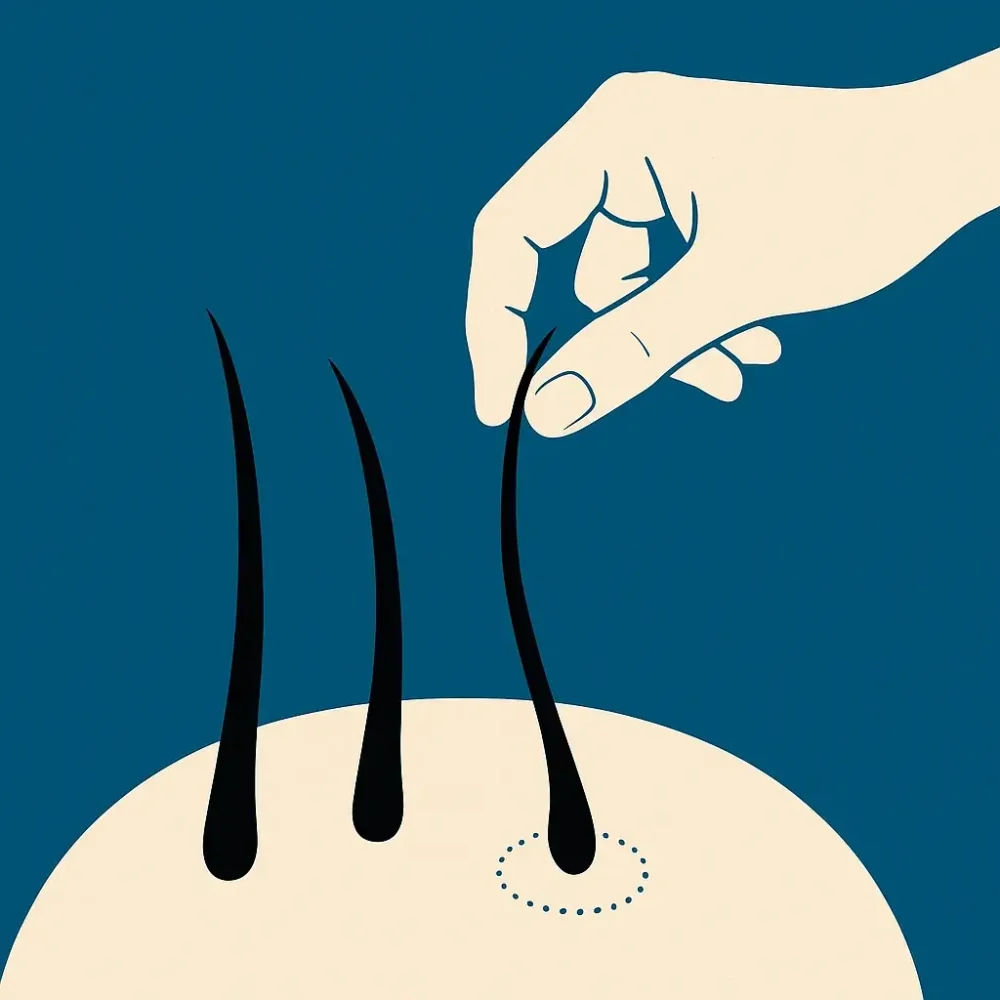When considering a hair transplant, most people focus on the number of grafts or the surgical technique used to extract them. However, one of the most critical factors for achieving an exceptional outcome is the recipient area. This is the section of the scalp where the harvested hair follicles, or grafts, will be implanted. Its design and preparation are fundamental to the final aesthetic result and the success of the entire procedure.
The Art of Natural Hairline Design

The creation of a natural hairline is arguably the most artistic and delicate part of a hair transplant. A skilled surgeon meticulously follows the subtle irregularities and contours. This requires a deep understanding of facial symmetry and aesthetics, ensuring the new hairline looks seamless and complements the patient’s features, avoiding a “cookie-cutter” result.
The goal is to design a hairline that will continue to look natural as the patient ages. The hairline design is always a collaborative process between the patient and the surgeon, taking into account factors like facial structure, age, and existing hair density.
Angle, Direction, and Depth: The Three Pillars of Implantation
During the implantation phase, the surgeon’s skill is paramount. The angle, direction, and depth of each implanted graft are critical. Hair does not grow straight up; it grows at specific angles and in unique patterns across the scalp. The surgeon must meticulously mimic this natural growth to ensure the transplanted hair blends seamlessly with existing hair and looks completely authentic.
Pillar | Importance in Hair Transplant Implantation |
Angle | Determines how far the hair stands away from the scalp. Mimicking natural angles is crucial to avoid a “doll-like” appearance and achieve a seamless look. |
Direction | Dictates the direction of hair growth. A natural, artistic flow is created by following the existing growth patterns of the surrounding hair. |
Depth | Ensures the graft is placed at the correct depth within the scalp. Too shallow, and the graft won’t survive; too deep, and it can cause scarring and an unnatural texture. |
Mastering these three pillars of implantation is what separates an average outcome from an exceptional one. By carefully controlling these variables, the surgeon can achieve both high density and incredible naturalness, creating a result that is undetectable to the untrained eye. Here’s a quick look at what each pillar involves:
Achieving a Natural-Looking Fringe
To create a soft, undetectable fringe, a surgeon must use single-graft follicular units along the very front edge of the hairline. This technique, where one hair follicle is implanted at a time, is critical for avoiding a dense, artificial-looking “plug” effect.
The single-graft technique allows the surgeon to mimic the natural, subtle asymmetry of real hair. By varying the angles and densities, they create a gradual transition from the forehead to the thicker hair behind it. This attention to detail in the implantation process is essential for natural-looking hair transplant before and after results.
Maximizing Graft Survival on the Recipient Area
The success of a hair transplant is about ensuring the survival of every follicular unit. The health and condition of the recipient area directly impact this crucial survival rate. A well-vascularized and carefully prepared recipient area provides the optimal environment for the newly implanted grafts to receive the necessary blood supply and nutrients
The surgeon’s skill in handling the grafts and creating the implantation channels plays a vital role. The channels must be precise in size, depth, and angle to protect the delicate grafts from trauma. A successful hair transplant procedure involves not only the aesthetic placement but also the careful biological handling that ensures the long-term viability of the new hair.
Therapies to Support Hair Growth
While a hair transplant provides a permanent solution for baldness, supplementary therapies can work wonders to enhance the overall density and health of your hair. These treatments can support the existing hair around the transplant area and promote accelerated growth of the new grafts. They are a powerful tool for maximizing your final results and achieving thicker, healthier hair.
This is a section that can easily be visualized as an infographic. Here are some of the most effective therapies to support hair growth:
- Platelet-Rich Plasma (PRP) Therapy:Using your own blood’s growth factors, PRP is injected into the scalp to stimulate dormant hair follicles and improve the health of existing ones.
- Specialized Hair Lotions:Medicated lotions containing active ingredients can be applied to the scalp to strengthen hair and prevent future loss.
- Vitamin and Mineral Supplements:Specific vitamins like Biotin, as well as minerals such as Zinc and Iron, are crucial for healthy hair growth and can be supplemented as part of your aftercare plan.
FAQs
Is the recipient area sensitive after a hair transplant?
Yes, the recipient area will be sensitive and may feel numb or tight for a few days after the procedure. It is crucial to handle this area with extreme care to ensure the grafts are not dislodged. Any discomfort can be managed with prescribed pain medication.
How long does the implantation phase take?
The duration of the implantation phase varies depending on the number of grafts being transplanted. It is a meticulous process that can take several hours. A larger number of grafts requires more time to ensure each one is placed with the correct angle and direction for optimal results.
Is it possible to increase graft survival?
Absolutely. Graft survival is maximized through a combination of a skilled surgical team, proper graft handling during the procedure, and diligent post-operative care from the patient. Following all of the doctor’s instructions is the most effective way to ensure the highest possible survival rate.
Can I choose my own hairline design?
While the surgeon will provide expert guidance, the hairline design is a collaborative process. The surgeon will work with you to create a hairline that meets your aesthetic goals while also ensuring it looks natural and complements your facial features. A good surgeon will manage expectations and ensure the final design is both appealing and realistic.
The Dr. Serkan Aygin Clinic Difference
At the Dr. Serkan Aygin Clinic, we understand this intricate process. Our approach focuses on meticulous hairline design and advanced implantation techniques to ensure every patient receives exceptional, natural results. If you are considering a hair transplant and want to learn more about our process, we invite you to book a free consultation to discuss your personal goals and needs with us.


